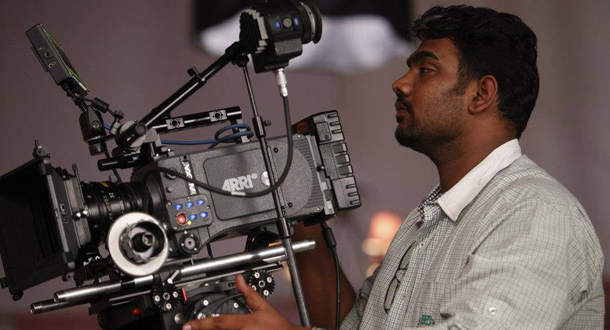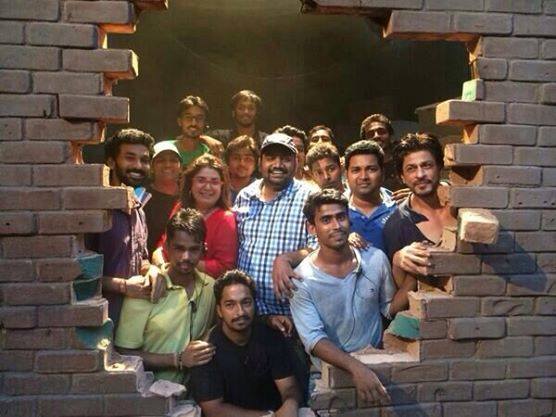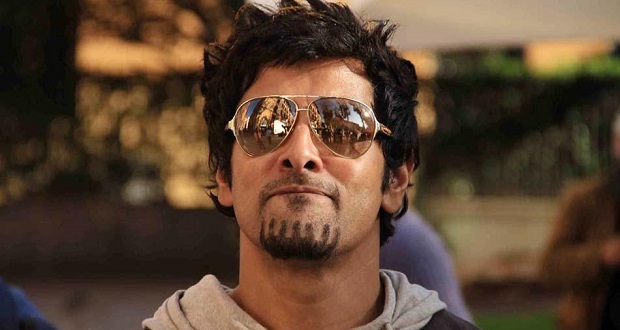Tete-a-tete with Manush Nandan, the cinematographer of Happy New Year

If you loved the visuals in Jiiva-starrer “Yaan”, you’re likely to enjoy Shah Rukh Khan’s “Happy New Year” even more. Young cinematographer Manush Nandan, former assistant of Ravi K. Chandran, has worked as DOP on both the films. In this freewheeling chat with Only Kollywood, Manush shares his experience of working on the biggest film of the year, King Khan and Farah Khan.
Excerpts from the interview
How did you land the opportunity to work in “Happy New Year”?
I did a film called ‘Ishkq in Paris’, and its assistant director, who also worked in this film referred my name to Farah, who was looking for a DOP, someone relatively new and willing to go the extra mile. I met her, but the final push came when she came to know I was Ravi K Chandran’s assistant. Both (Farah and Ravi) of them have known each other for a long time and are great friends. Ravi vouched for me and had also told her that he’s hiring me for his directorial debut (Yaan), and that she can trust me with her film.
It’s a SRK film at the end of the day. Did that make you nervous when you were signed on?
I wouldn’t say I was nervous but I definitely felt more responsible. I was aware that there’d be lot of responsibility and expectations will be high. This naturally made me realize that I have to work harder. I didn’t get nervous because I know it would eventually affect my work.
As a cinematographer how differently have you tried to present “Happy New Year” from the other films?
If you’ve watched Farah’s films, you’ll realise that you can’t categorize them in a particular genre. That’s a challenge for any technician. The canvas of ‘Happy New Year’ is so big – there’s fight and dance, and all that put together, makes it a packaged entertainer. From the promos and trailer, it may look like a fun film, but there’s a lot of drama in it. Farah thinks drama is her forte. She exactly knows what she wants and since she’s well-versed with technology, she also knows what she wants in each frame. So working with her was easy as well as tough

Did you feel any additional pressure to portray a star like SRK in a certain way?
I’ve worked with stars such as Aamir Khan and Ranbir Kapoor before. I’ve also worked with Shah Rukh in two other films “Rab Ne Bana Di Jodi” and “My Name is Khan”. I think he’s (SRK) a comfortable actor, who trusts his technicians to the core. He never asks you to make him look like the way he would like to see himself on the screen. Be it the choreographer or editor or even the director, Shah Rukh never interferes in their work because he knows that they know their job and will give their best. I think this quality of his made us all even more responsible because when a star is associated with a project, stakes are high. I can say confidently that I was never pushed to do anything. It was my final call when it came to cinematography.
How involved was Shah Rukh in your department. Did he ever sat down and discuss shots with you?
He basically doesn’t like to interfere much in other departments since he’s not a pushy actor. But he takes special interest in the action sequences in his films as he has a bigger vision for it. When it comes to action, he’s involved seriously from the initial stages to the final shoot. He works very closely with the team to ensure that action is best in his films. That’s the only time you find him very involved with all other departments. But otherwise he’s busy being an actor.
Shah Rukh once said that he has immense respect for southern technicians. You being a south Indian, did you feel that respect?
I think I should say it has benefited me a lot since I come from south. And that credit goes to all my south Indian senior cinematographers such as Santosh Shivan, Ravi K Chandran and Manikandan, who’ve created the path for me. When you’re seen as a south Indian technician, you’re respected more. I think it’s because of the work of my seniors; it has become easier for young technicians like me to work in the industry even though we haven’t really achieved much yet.
What was your biggest challenge on the project?
Besides the tough fight and dance sequences, the real challenge was to accommodate the ensemble cast in a single frame in most of the scenes. To simply portray these popular actors in a certain way on the screen may not sound as a challenge, but it indeed was quite tough. You have three popular lead stars such as SRK, Abhishek Bachchan and Deepika Padukone, with popular character actors as well. They all have to look good on screen. When they’re standing together in a row, you can’t just make the first two actors look good and leave the rest. All of them have to look good and they should fit into the mood of the scene. Shooting a candle light dinner with two people is any day easier than shooting a similar kind of situation with six people. All this snowballed into a big challenge. When you’re working on such a big film, you can’t afford to make mistakes.
How has working with Ravi K. Chandran helped you to be a better cinematographer?
Working with Ravi sir was a great experience. He’s someone with a vision and he doesn’t give up until he translates it into his work. Although I’ve assisted him in films such as “Ghajini”, “Saawariya”, “My Name is Khan”, “Fanaa” and “Firaaq”, I found him to be a demanding director when I worked with him in “Yaan”. It helped me to understand the vision of a director from the perspective of a cinematographer, and it came in very handy in “Happy New Year”.
Where does a cinematographer’s role come into picture nowadays in cinema? Does it start from the scripting phase?
Occasionally you find a cinematographer from the scripting stage. It’s mostly after the completion of the script, he or she comes into the picture. From then on, we are involved till the release of the film. According to me, cinematographer is the only person besides the director to be involved in the film from start to finish. We’re involved on a daily basis in screen test with actors, location scouting, technical recce and shoot followed by the post-production. All this is proof to the involvement and importance of a cinematographer in a project. Cinematographers help in translating the vision of a director on to the screen in such a way that it’s visually appealing. And when you’re working with a director like Farah, our job becomes easier. Farah is someone with a lot of clarity. She’s always willing to share inputs, good or bad; she gets them across to ensure that the final product is not affected. If she likes something she instantly appreciates it, and if she’s not happy she’ll straightaway say we can do better.
What’s your biggest takeaway from “Happy New Year”?
Shooting a film like “Happy New Year” was my biggest takeaway. When you work with a director like Farah Khan, you learn a lot about why certain things are done in a certain way. Working with both Farah and Shah Rukh, who have over two decades of experience automatically becomes a learning of sorts. I don’t see what’s more rewarding than being involved in the biggest film of the year.


